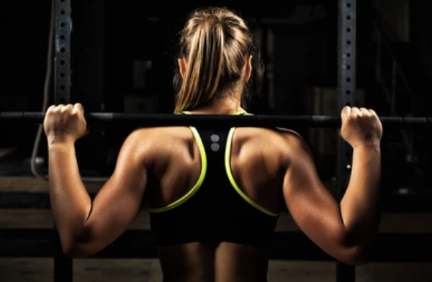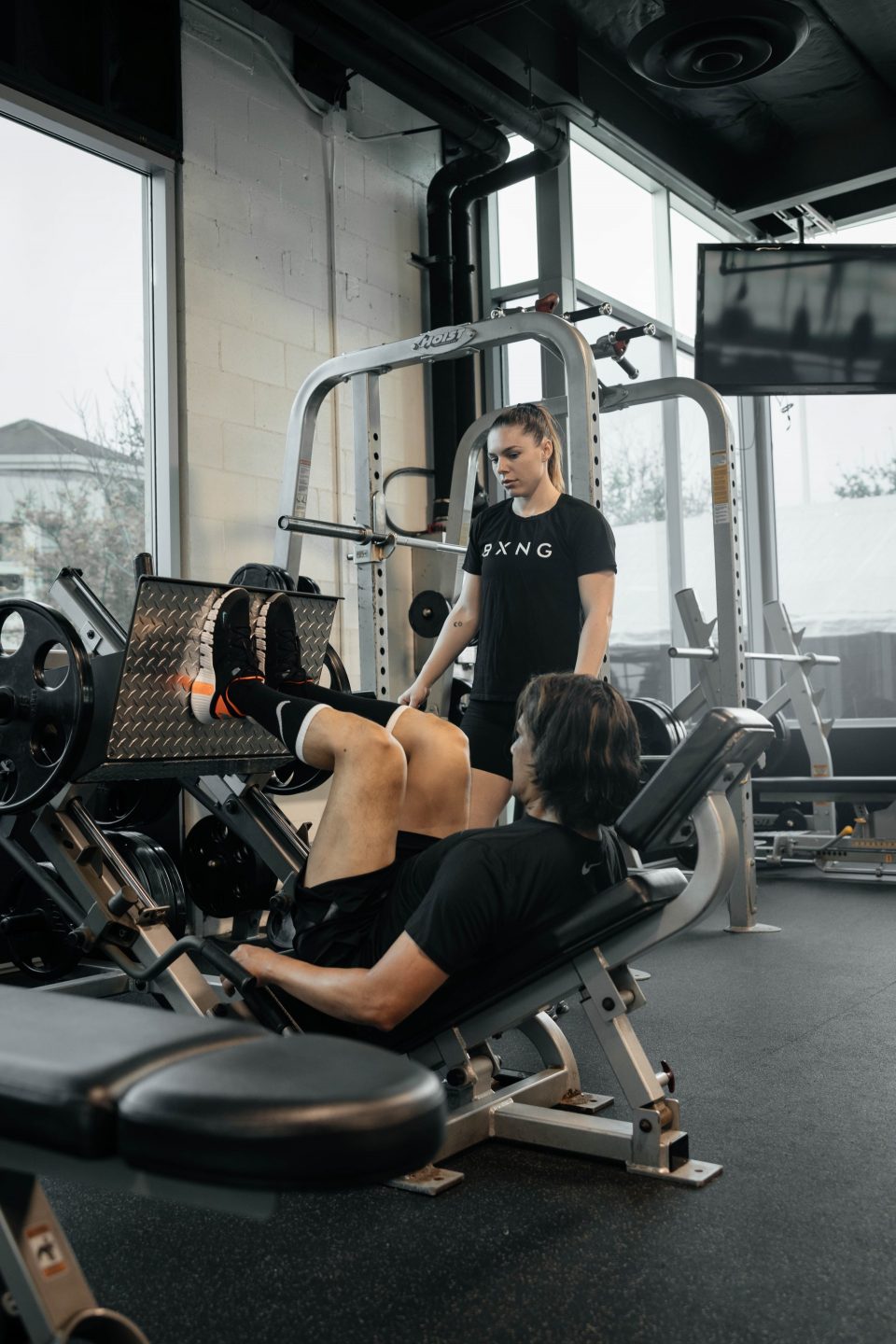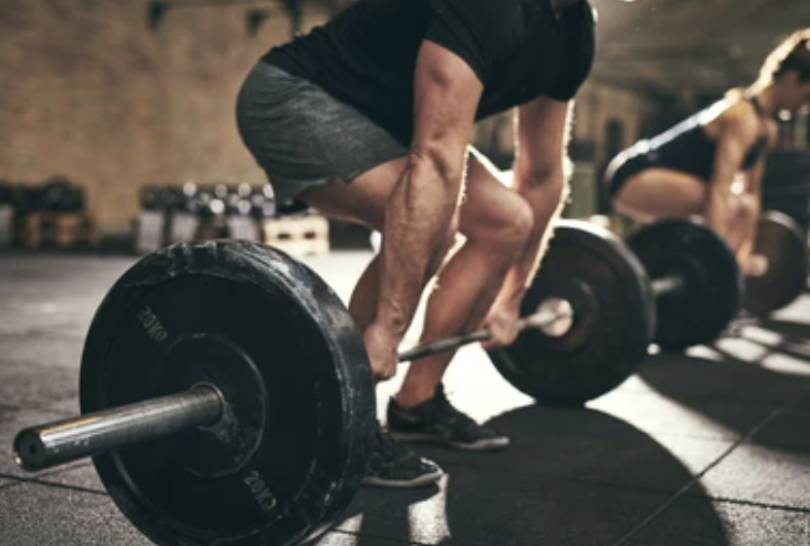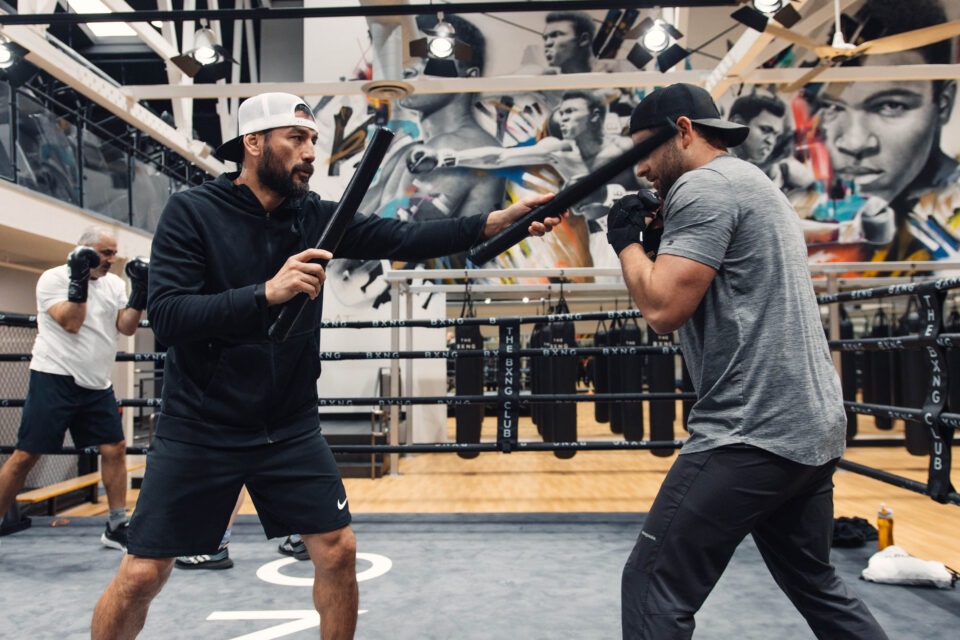Putting together a solid leg day can be intimidating – especially when you know that strong legs do more than just look good. It doesn’t have to be as complicated as it may seem. Remember, you use your leg strength for so many daily tasks, too! Leg day can feel like a Monday.
Designing an effective leg workout typically goes like this: the simpler, the better. Break it down by the major muscle groups of the legs: glutes, quads, hamstrings, and calves. There are always ways to build upon mastering the movements of these major muscle groups as you progress.
An effective leg day isn’t complete without a proper warm-up and cool-down. A warm-up can be 5-20 minutes of light cardio to get the heart rate rising and blood flowing. Begin with some dynamic stretching: bodyweight squats, bodyweight lunges, hip openers, leg swings, etc.
Post workout: stretch it out for 5-20 minutes and focus on areas that need it the most. Incorporate breathing in through the nose and out through your mouth to foster breathing skills.
Our Recommended Leg Workouts For Leg Day
Learn about various leg day exercises to include in your leg day! Remember that proper form is ESSENTIAL to a successful leg day. It is easy to injure yourself during leg day, so it requires total focus. Typically – it is best to include a functional movement, a conditioning movement, and some cardio. Don’t overthink it, just DO!
Back squat
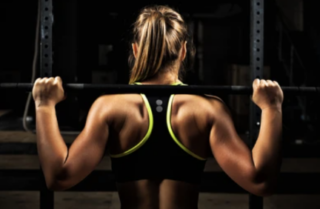
The back squat is a fundamental exercise during leg day – it’s a total classic and is an excellent foundation for beginners and experts alike. Target the posterior chain and hit the glutes & hamstrings. Like most fundamental movements, form is key, and efficiency/benefits reap through.
For a back squat:
- Load a barbell with equal weight on each side.
- Properly load the barbell on your traps (feel for the sweet spot).
- Stand with feet shoulder-width apart with eyes & chest forward.
- Toes should be slightly pointed out as you sit back into your hips.
- Bend the knees and drop down to the floor.
- Lower your body until your thighs are parallel to the ground, and push back to the starting position.
Front squat
If you’re ready to target your quads and your core, get ready to learn more about the front squat. This movement requires learning how to use your wrists for a leg movement in a different way.
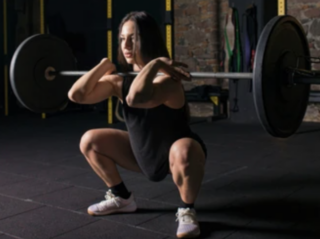
Front squat:
- Load the barbell on each side with equal weight.
- Approach the barbell with the front of your body and hook your fingers in an undergrip motion. The bar should be in front of your shoulders.
- Sit back into your hips, bend the knees and lower. Do not let your knees veer out too perpendicular.
- Push back to the starting position.
Leg Press
It’s important to note that there’s a difference between free-weight exercises and machine exercises. A machine like the leg press allows you to isolate specific muscles (quads, hamstrings, and glutes).
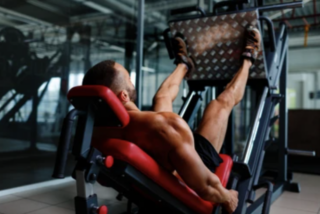
Leg Press:
- Sit on the leg press machine with your back and lay flat on the headrest.
- Begin with your feet hip-width apart and think of forming your legs at a 90-degree angle.
- Brace your core and extend your legs.
- Pause at the top, and do not lock your knees.
- Slowly return to the original position.
Leg Extension
Leg extensions are typically completed on a lever machine. It starts with sitting on a seat and raising a padded bar with legs. This exercise works the quad and is killer for muscle definition as a part of overall strength training. The leg extension is known as an “open chain kinetic exercise” and switches things up from the stereotypical squat. With leg extension, your legs aren’t stationary and create a fluid “open” movement.
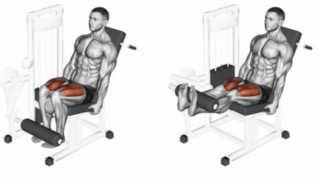
- Place hands on handlebars.
- Exhale and lift the weights until they are almost straight. The pad should go right about where your shin is.
- Exhale and lower weight back to the starting position.
Nordic Hamstring Curl
The Nordic curl is simple, effective and designed to strengthen hamstrings. This exercise’s main objective and premise is kneeling with hands crossed in front of your chest and lowering the torso towards the ground. The hamstring muscles are lengthened and stretched — the hamstring fully contracts when the body lowers and returns to the starting position. A strong hamstring improves athletic performance, reduces injury risk, and maintains good posture.
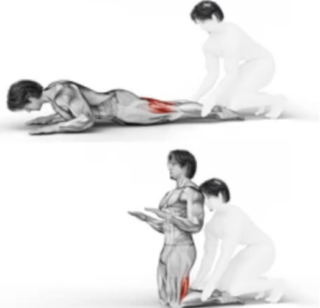
The set-up:
- Start on your knees with a pad or cushion underneath.
- Have a person or stability device hold your lower legs or ankles in place. Remember that feet and ankles should be in line with your knees.
- Keep a neutral head position and neck position.
- Arms go by your sides and get ready to engage the core.
- Slowly lower yourself towards the ground and maintain a straight line.
- Squeeze your hamstrings to pull your body back to the starting position.
Romanian Deadlift
Get ready to build glutes, hamstrings, and calves. A Romanian deadlift is an excellent fat burner and metabolism booster and helps with grip strength. The primary movers in the Romanian deadlift are the hamstrings.
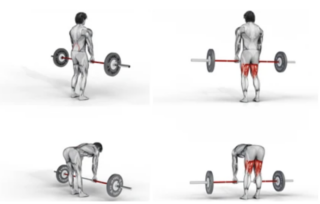
Remember, there is no squatting movement, and your legs do not need to be entirely straight.
- Start standing tall with your feet underneath your hips. Hold the barbell (or dumbbells) in front of your thighs.
- Slowly send your hips back (behind the heels) with a flat back.
- Keep shoulder blades drawn towards each other as the weight is lowered with your head straight.
- When you feel the stretch in your hamstrings, send your hips forward to return to the original position.
Reverse Lunge
A reverse lunge is a great way to help learn the proper lunge format. It can also be done anywhere with zero equipment.
- Stand with feet shoulder-width apart and arms down
- Step backward with one foot and lunge (not too forward) to form a 90-degree angle
- Push back through the left heel to the starting position
Lateral Lunge
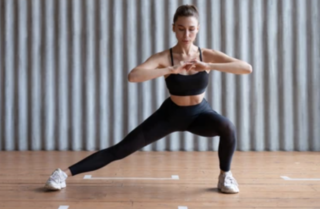
If you’re looking for a new lunge variation to use in a strength-training routine, consider trying a lateral lunge. This bodyweight exercise works various lower body muscles, including fluid unilateral movement. They require more balance and stability.
- Start with feet hip-width apart with a slight bend in the knees.
- Create a stable foot position.
- Keep your spine neutral and chest upright, and take a slow, big step to the side.
- Shift your body overweight to the lead leg and sit hips back with toes pointed forward.
- Pause for a second in the movement and use your glute to push your foot back to begin the motion to return to the original position.
Bulgarian Split Squat
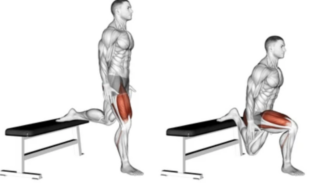
Think of a single-leg squat with the back leg elevated. This type of squat can more heavily target the squat or the glute, depending on foot placement. It requires a lot of balance and coordination with lots of core work. Before you do anything to perform this exercise, please ensure you find a STURDY piece of equipment to place your back leg on (bench, chair, etc). You’ll feel lots of trial-and-error when it comes to proper foot placement.
Bulgarian Split Squat:
- Stand about two feet in front of the sturdy bench.
- Keep feet hip-distance apart and engage the core. Bring your shoulders back and look forward.
- Pick up one foot and place it on the bench behind you. The back foot is there to help with balance.
- Bend the opposite knee and think about evenly distributing your weight.
- Leaning slightly forward or back will depend on your mobility and where you are trying to garner.
- Press back to standing to use your quad & glute power. Exhale as you press back to the original standing position.
Benefits of Training Legs
Think of it this way: your legs are your pillars. Training legs should be a top priority for overall health and physique progression. Some of the most common fitness goals include getting stronger and losing weight. Training legs is an excellent way of achieving those goals. Your legs can take more weight, spike up your metabolism, and learn how to generate power with your lower body.
Have you ever heard anyone say, “Never skip a leg day”? Leg workouts are important for various reasons, yet they are sometimes the first to be neglected. For starters, begin the process to ensure that your body is balanced. This cannot be achieved by simply training the upper body.
Build More Muscle – Testosterone is a steroid hormone naturally produced in the body. It helps increase muscle growth, and doing compound moves helps elevate your T-levels.
Burn More Calories – Your glutes are the largest muscle in the body. Working these bigger muscles requires more energy and burns more calories.
Improve Big Lifts – Big lifts are the move for conditioning. Core strength supports the body in every movement, and performing functional exercises strengthens the core, legs, and glutes to develop muscle and mobility.
Reduce Injury Risk – Muscle imbalances, such as poorly conditioned hamstrings, lead to mobility issues, back pain and significant injuries such as ACL injuries. If you are serious about building muscle and lower body strength, once a week is a good place to be.
Correct Muscle Imbalances – Over time, you may find a stronger dominant side. Training each leg individually can help align your body and correct muscular imbalances in your legs. This will help you with overcompensation. Some exercises to help jumpstart muscle correction are – leg extension, lying leg curl, and walking lunges.
Build Core Strength – One of the optimal ways to build a lean & powerful core is to find various ways of incorporating core into your exercises. So, while you may be performing a hamstring move, you can definitely still be working your core. A solid core helps with athletic performance, everyday life, posture and staying strong for longer.
Improve Other Lifts – Learning compound movements and how to have a solid leg day will ensure you also learn how to lift correctly for other muscle groups. Aside from your lower half getting stronger, so will your confidence and understanding of how the body moves together.
How many sets and reps should you do?
Sets and Reps
Here’s an easy formula for beginners looking to increase fitness. Always remember that everyone’s body responds differently, and you should adjust accordingly.
Pick 3-5 exercises per leg workout. For each exercise, break it down into three sets of 8-12 reps of each exercise. You want to reach fatigue but not complete failure. Keeping it to 3-5 exercises allows you to focus on integral movements and progress always at the forefront. Sometimes, doing too much really is precisely that… too much.
Focusing on 8-12 reps per set allows you to play around with different weight variations. Think like this:
Pulse squat (3 sets for 12, 10, 8, 12 reps)
You will start with a lighter weight, then go heavier for the 10 & 8-rep sets and return to the lighter weight at the end. This will help you learn how your body responds and feel the variation in weight.
How many times a week should you work out your legs?
This question is going to depend on how often you train in general. Being such a large muscle group, leg muscles must be stimulated but not overtrained. Depending on your available workout schedule, 2x a week is a good amount to train your legs. You want to ensure that you give time between each training session for growth and recovery.
Get Better Results On Leg Day With our Expert Personal Training Sessions
Learning how to train your legs is critical to building muscle, confidence in the gym, and mobility. It is a life-changing experience that will enhance your training understanding of the way the body works and what your body responds best to! At The BXNG Club, our personal trainers have extensive knowledge of coaching various levels of ability and fitness through the best leg days. Take advantage of a complimentary PT session at The BXNG Club today!
